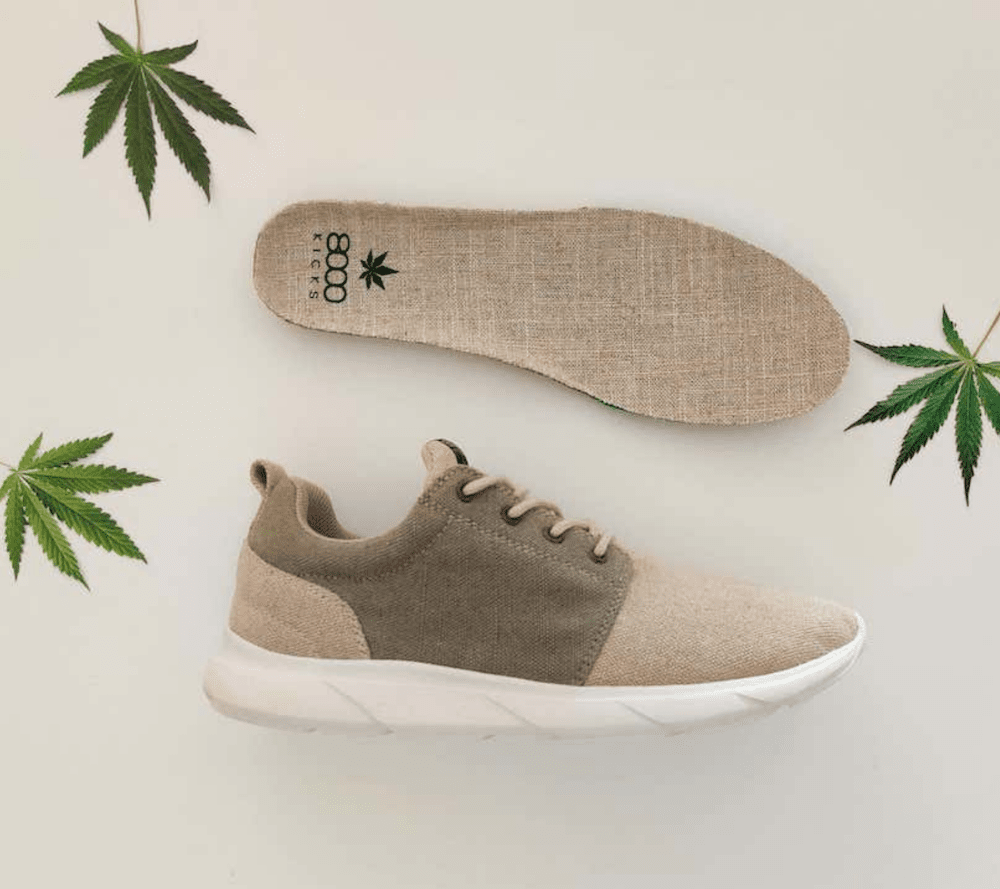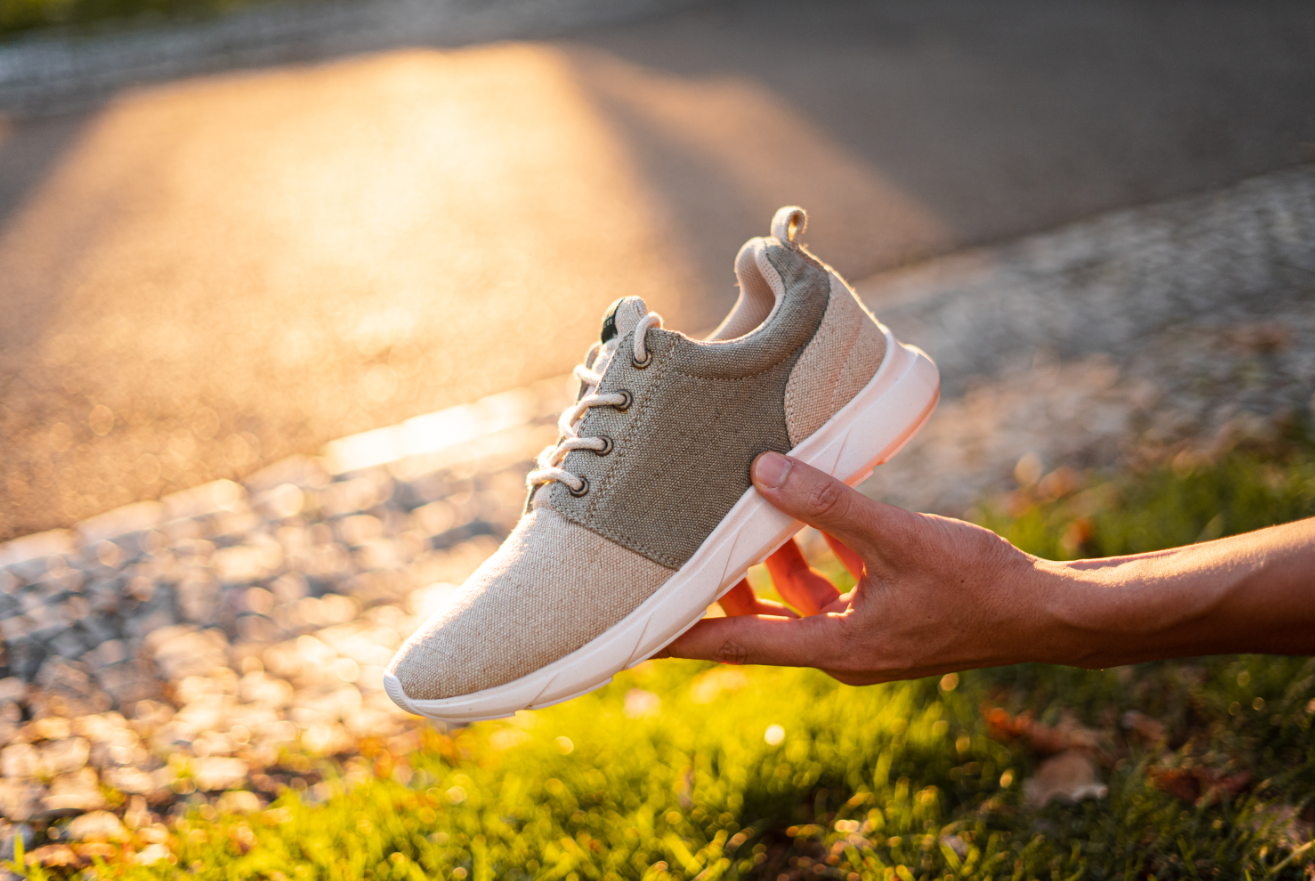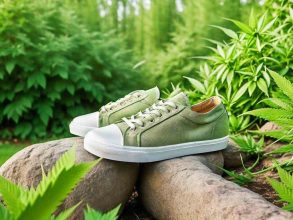- Hemp shoes eco-friendly manufacturing
- Why are hemp shoes more sustainable?
- How are hemp shoes manufactured?
- Step by step process for hemp shoe manufacturing
- Durability and slip-resistance of outsole materials commonly used in hemp shoes
- Finishing touches, including quality control, packaging, and labeling
- Exploring the Versatility of Industrial Hemp Fiber
- FAQs
- Conclusion
- Footwear
- Outdoor Gear
Hemp shoes eco-friendly manufacturing
Are you looking for a sustainable alternative to your footwear choices? Are you concerned about the impact your everyday shoes have on the natural environment?
If your answer is yes, hemp shoes could be the answer. They are a sustainable, vegan alternative to traditional footwear.
KEY TAKEAWAYS:
- Industrial hemp is a strong, durable, and breathable fiber that uses 20% less water than cotton.
- Hemp fiber is biodegradable, preventing the accumulation of waste in landfills.
- Hemp can be used to create a variety of fabrics, from muslin to heavyweight canvas.
Hemp is one of the most eco-friendly textiles on the planet because it’s an easy crop to grow, doesn’t need pesticides, and requires little water. It’s also inherently antimicrobial, odor-resistant, and waterproof, which makes it an ideal material for shoemaking.
Hemp shoes eco-friendly manufacturing is also significantly more sustainable than traditional shoemaking. Shoes made from materials like leather and polyurethane release fossil fuels into the environment and can remain in landfills for hundreds of years.
This article explores the step-by-step manufacturing process of hemp shoes, including explaining the specific methods used to create the upper, lining, and outsole.
Why are hemp shoes more sustainable?
Hemp shoes eco-friendly manufacturing is more sustainable than traditional shoemaking because hemp is an easy crop to grow, doesn’t need pesticides, and requires little water.
How are hemp shoes manufactured?
The manufacturing process of hemp shoes includes three stages: The upper, the lining, and the outsole.
In the first stage, fibers are collected from the stem of the hemp plant, spun into yarn, dyed with natural additives, and woven or knit to create the upper.
In the second stage, the upper is then cut to fit the shape of the shoe and attached to the lining, which is selected for its moisture-repelling and comfortable properties.
In the final stage, the outsole is made from materials like natural rubber, heated and poured into a cast that fits the shape of the shoe, and then bonded with a strong adhesive.
Step by step process for hemp shoe manufacturing
Hemp shoes are manufactured using sustainable materials and techniques that minimize waste and pollution.
Stage 1 – The Upper
The upper is the crucial first step in the process and sets the foundation for the entire shoe. Hemp is a perfect textile for a shoe upper because it’s naturally breathable, rip, and water resistant.
- Step 1: Fibers are collected from the stem of the hemp plant to be sorted, cleaned, and prepared for spinning.
- Step 2: The fibrous material is spun into yarn. The yarn is then dyed with natural additives to give the shoe its color.
- Step 3: The dyed yarn is woven or knit together to form the upper portion of the shoe. Weaving interlaces the yarn, while knitting interlocks loops of yarn together. The objective of both methods is to create a protective, well-ventilated upper.
- Step 4: The upper is cut to fit the shape of the shoe. This process is called “lasting”, and a few different techniques can be used depending on the type of shoe. Once complete, the process moves on to attach the upper to the lining and outsole.
Stage 2 – The Lining
The second stage is to create the interior lining which directly encases your foot. The final result needs to be comfortable and weather resistant.
- Step 5: Lining fabric is selected based on how well it repels bacteria, moisture, and odor. It also needs to be comfortable and non-abrasive. Cotton, polyester, or hemp are often used.
- Step 6: The lining is precision-cut according to the dimensions and shape of the upper.
- Step 7: Next, the fabric is sewn inside the upper, and the seams are kept as invisible as possible for a polished look.
- Step 8: Finally, once the lining and upper are connected, the shoe is ready for the final step of attaching an outsole.
Shoe lining is important because:
- It keeps your feet dry to avoid odor and fungus.
- It provides comfort and reduces friction, blisters, and other problems.
- It increases the comfort and longevity of the shoe.
Stage 3 – The Outsole
- Step 9: The outsole comprises the bottom portion of the shoe and is often made from materials like natural rubber. It needs to provide good cushion, support, and traction.
- Step 10: In order to create the outsole form, materials are heated and poured into a cast that fits the shape of the shoe.
- Step 11: Once it cools, the outsole is bonded with a strong adhesive. This is the final stage before the shoe is ready to be worn.
While this final stage can vary from brand to brand, it essentially involves durable materials, a molding process to shape the outsole, and a strong adhesive to attach the outsole to the upper of the shoe.
Durability and slip-resistance of outsole materials commonly used in hemp shoes
The materials used to create the outsole needs to be able to withstand the wear and tear of daily use. It also has to be slip-resistant to keep you safe on slick surfaces.
A few commonly used outsole materials in hemp shoes include natural and recycled rubber.
Natural rubber makes a great outsole material because it is durable, sustainable, and long-lasting, which makes it perfect for the bottom of your shoes. It also provides excellent traction.
Recycled rubber is another eco-friendly option made from old tires and other materials like yoga mats.
Finishing touches, including quality control, packaging, and labeling
All shoes undergo a quality assessment to make sure they are well constructed to meet a customer’s demands. This includes checking the shoe’s construction, design and materials.
The shoes are also labeled and packed during this stage. They will recieve final branding, including any logos or labels, and then will be put into boxes or bags for shipping.
Eco-savvy manufacturers use biodegradable or recyclable packaging and labels to minimize the impact on the environment.
Once the shoes are ready for shipment, a final inspection is done and then they are sent to various retail locations where they can be purchased by consumers.
Exploring the Versatility of Industrial Hemp Fiber
In this informative video, Florence Urban, the President of Hemp Traders, takes us through the process of producing hemp fiber and yarn, demonstrating the incredible versatility and eco-friendliness of this amazing plant. With over 25 years of experience, Hemp Traders is the largest supplier of hemp textiles and fiber products in the United States.
Hemp fibers are stronger than cotton and uses about 20% less water. It also produces a more fiber per acre, making it an eco-friendly alternative. Hemp is not a total replacement for cotton, but it can be used as a replacement for flax and linen, and it can be blended with cotton to create fabrics with the best qualities of both fibers.
Hemp fibers have almost no stretch and are also porous, which makes them breathable and also preventss the growth of anaerobic bacteria. Since it is a natural product, at the end of its life cycle, hemp is completely biodegradable.
Hemp Resources:
FAQs
Q: Is hemp fiber as soft as cotton?
A: Hemp fiber can be processed to resemble cotton and is often used as a replacement for flax and linen.
Q: Is industrial hemp the same as medicinal hemp?
A: No, industrial hemp is grown for its raw materials, while medicinal hemp is grown for its CBD content.
Q: Is hemp fiber environmentally friendly?
A: Yes, hemp fiber is biodegradable and uses less water than cotton, making it a more sustainable material.
Conclusion
As consumers, we have the power to be more sustainable and less polluting by being more conscious of our footwear choices and opting for sustainable options like hemp shoes.
Not only are hemp shoes environmentally friendly, they are also a better investment compared to regular shoes. They offer better protection, keep your feet fungus and odor free, and are well-made to last for years and years.
So, the next time you’re shopping for new shoes, consider choosing a more sustainable option like hemp shoes.
Related Posts:
Fair Trade Finder makes product and service recommendations, based on thorough research and comparison analysis. Read more.








